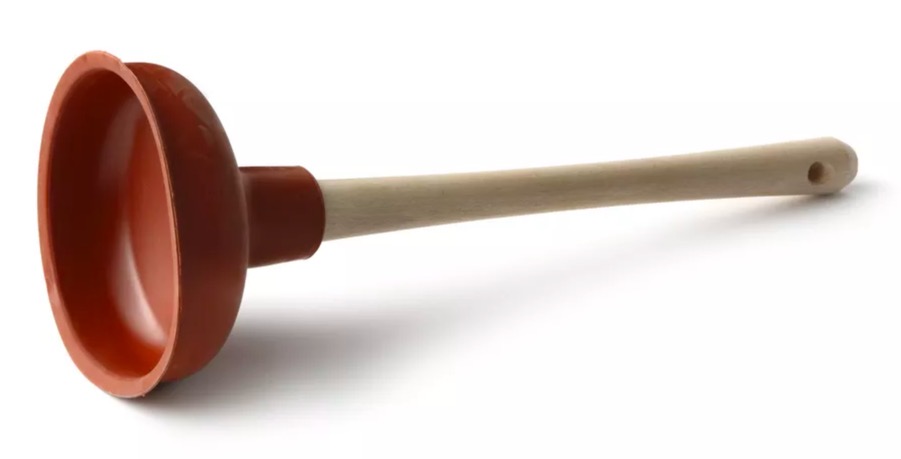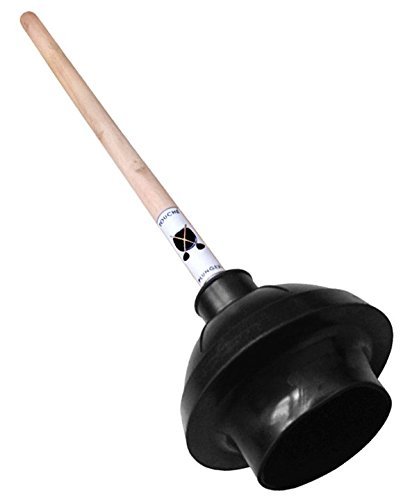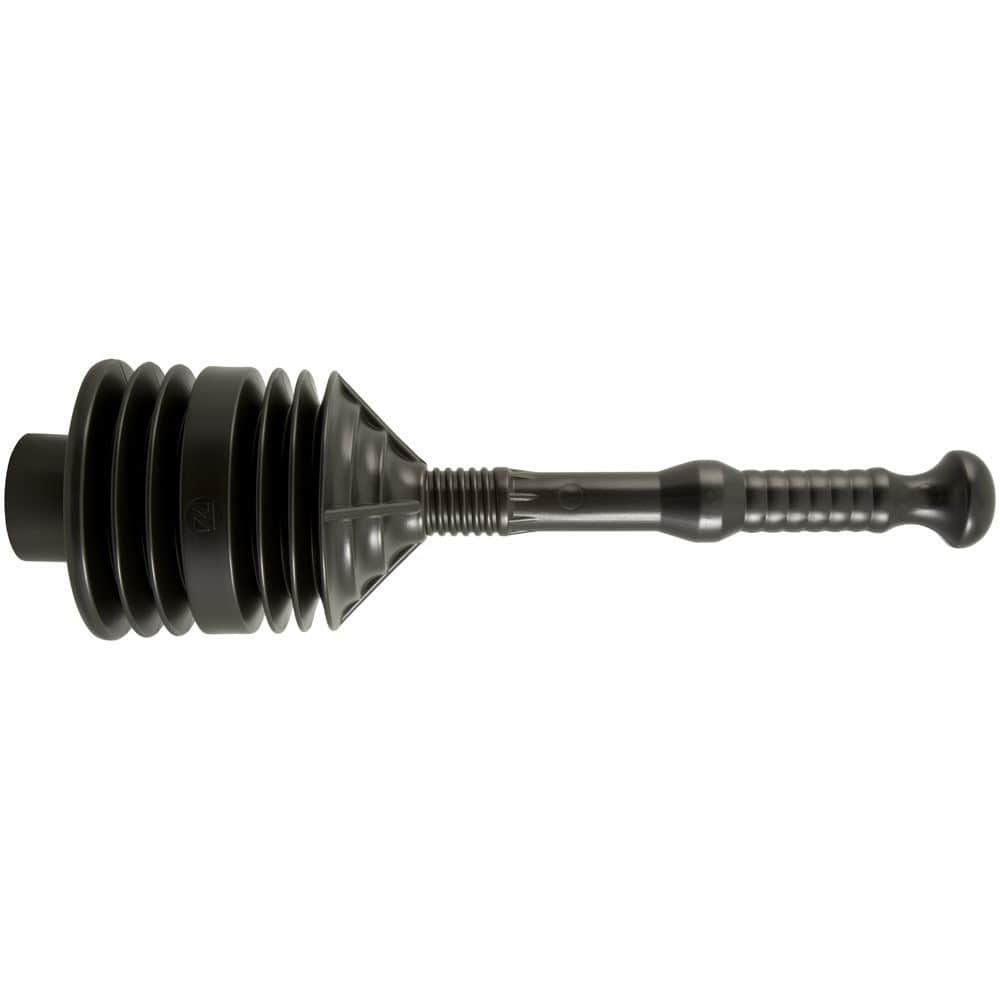It’s crazy how many people don’t know that there are different types of plungers to begin with…
But the big question is… Have you been using the wrong plunger to unclog drains and not even realize it? The chances are likely. It turns out that your typical plunger isn’t efficient at unclogging toilets.
With clogged drains being one of the leading problems in a household. It’s necessary for everyone to know how to unclog a toilet– as well as being able to use the proper tool for the job.
So let’s make your life easier by using the proper plunger for efficient and effect clog repair! Here are the 3 most important plungers, and how to use them:
ONE, The Common Sink Plunger A.K.A “The Cup Plunger”
This is usually what comes to mind when people think of plungers. Sink plungers are made up of a straight (usually wooden) handle and rubber cup. These plungers only work properly on flat surfaces. The cup needs to lay flat over the drain and create the vacuum necessary to dislodge the clog. The curve of a toilet bowl doesn’t allow the proper seal to occur, therefore making this plunger ineffective on sinks. This plunger is able to create both positive and negative pressure. Positive pressure is created by forcing the cup down and negative pressure is created by the vacuum effect when pulled away from the fixture.
Use this for: Bathroom sinks, tubs, kitchen sinks, or anything with a flat like surface.

TWO, Toilet Plunger A.K.A “Flange Plunger”
Although it’s called a toilet plunger, this plunger provides the flexibility to fit in just about any drain. This plunger has a cup-like that of a sink plunger but also has a soft rubber flap that folds out from inside the cup. The fold-out flap fits well over the curved toilet drain, which provides the necessary suction needed. The flange (soft rubber flap) can be tucked into the cup and the plunger can be used as a cup plunger. Although this plunger is very versatile, we do not recommend using the same plunger on both toilets and sinks. This is unhygienic and could lead to cross-contamination.
Use this for: Any toilets, sinks, or tubs!

THREE, Accordion Plunger
The accordion plunger is made up of hard plastic. While it can produce a lot of force, it is not very easy to use. The plastic is very hard, so creating a vacuum seal over the drain can be challenging. Keep in mind that since this plunger is made of plastic it can possibly scratch the surfaces of your toilet, unlike other rubber plungers that will not.
Use this for: Toilets only.

Now that we have the types out of the way…
Here are our purging tips to keep in mind when getting the job done.
- Use the Correct Plunger: Use this guide to select the right plunger for the best results.
- Plunge Straight: Plunging at an angle won’t provide the proper force and can cause the seal to come loose. Plunge straight up and down at a vertical angle to get the most out of your pumps.
- Create Suction: Get air out of the plunger cup by slowly pressing down to create suction. This reduces the air contained in the cup and creates a better seal.
- Submerge Plunger: Make sure the plunger is submerged with water. If there is not enough water to cover the plunger cup, add water to the area.
- Maintain Plungers: Any tears of the cup or bell of the plunger will result in a poor vacuum seal and loss of pressure. Plungers should also be kept clean and dry when not in use to prevent cracking, ripping, or growth of mold and mildew.
When it doubt…CALL A LOCAL PLUMBER!
To schedule, an appointment with a plumber in Surrey, BC, contact Sabtech Plumbing & Drainage. Today.
